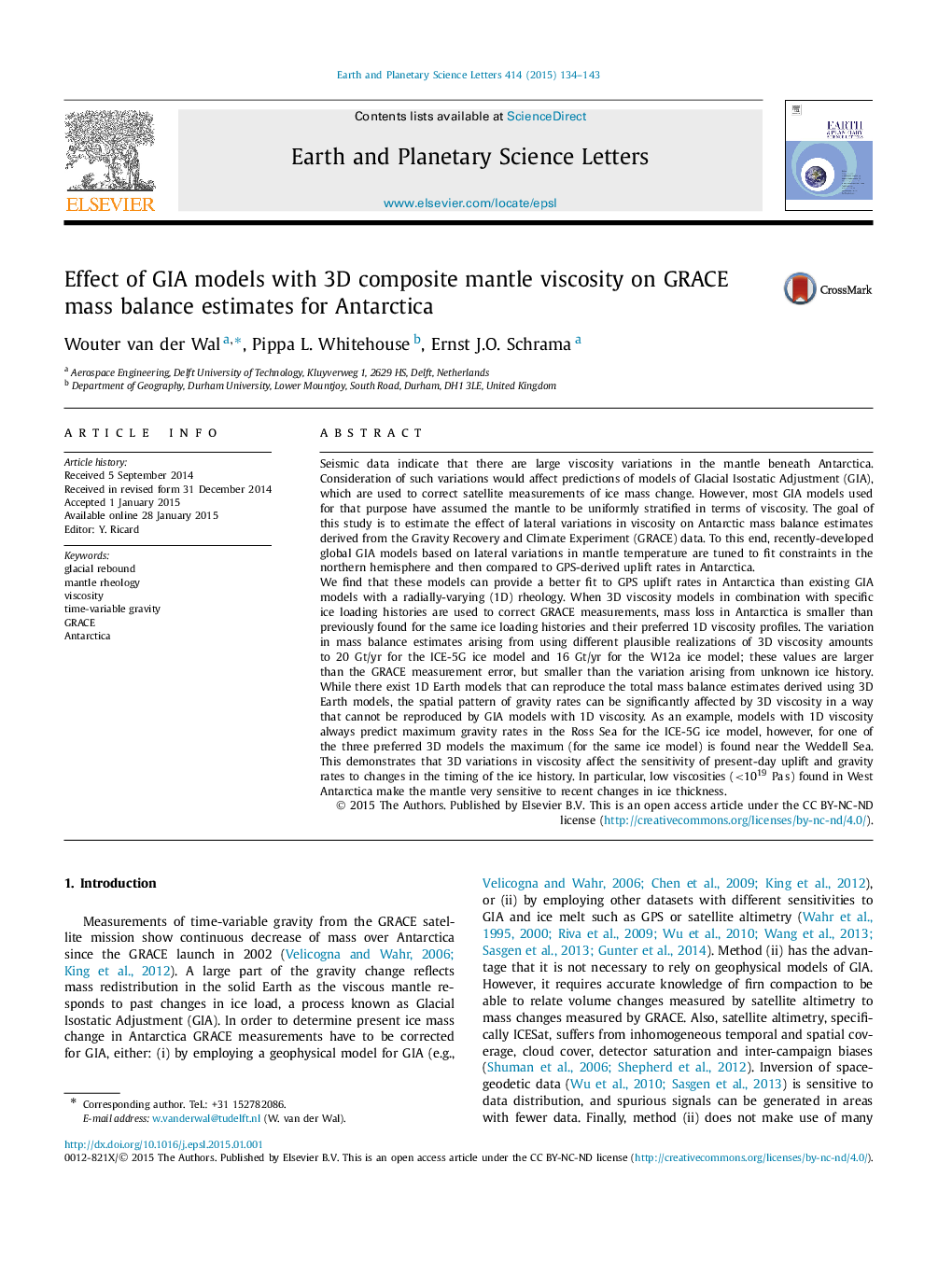| کد مقاله | کد نشریه | سال انتشار | مقاله انگلیسی | نسخه تمام متن |
|---|---|---|---|---|
| 6428578 | 1634742 | 2015 | 10 صفحه PDF | دانلود رایگان |

- GIA model with 3D viscosity based on seismic tomography and olivine flow laws.
- Low viscosities (<1019Pas) beneath West Antarctica.
- Significantly affected spatial pattern of uplift rate.
- Smaller mass loss for Antarctica found from GRACE data.
Seismic data indicate that there are large viscosity variations in the mantle beneath Antarctica. Consideration of such variations would affect predictions of models of Glacial Isostatic Adjustment (GIA), which are used to correct satellite measurements of ice mass change. However, most GIA models used for that purpose have assumed the mantle to be uniformly stratified in terms of viscosity. The goal of this study is to estimate the effect of lateral variations in viscosity on Antarctic mass balance estimates derived from the Gravity Recovery and Climate Experiment (GRACE) data. To this end, recently-developed global GIA models based on lateral variations in mantle temperature are tuned to fit constraints in the northern hemisphere and then compared to GPS-derived uplift rates in Antarctica.We find that these models can provide a better fit to GPS uplift rates in Antarctica than existing GIA models with a radially-varying (1D) rheology. When 3D viscosity models in combination with specific ice loading histories are used to correct GRACE measurements, mass loss in Antarctica is smaller than previously found for the same ice loading histories and their preferred 1D viscosity profiles. The variation in mass balance estimates arising from using different plausible realizations of 3D viscosity amounts to 20 Gt/yr for the ICE-5G ice model and 16 Gt/yr for the W12a ice model; these values are larger than the GRACE measurement error, but smaller than the variation arising from unknown ice history. While there exist 1D Earth models that can reproduce the total mass balance estimates derived using 3D Earth models, the spatial pattern of gravity rates can be significantly affected by 3D viscosity in a way that cannot be reproduced by GIA models with 1D viscosity. As an example, models with 1D viscosity always predict maximum gravity rates in the Ross Sea for the ICE-5G ice model, however, for one of the three preferred 3D models the maximum (for the same ice model) is found near the Weddell Sea. This demonstrates that 3D variations in viscosity affect the sensitivity of present-day uplift and gravity rates to changes in the timing of the ice history. In particular, low viscosities (<1019Pas) found in West Antarctica make the mantle very sensitive to recent changes in ice thickness.
Journal: Earth and Planetary Science Letters - Volume 414, 15 March 2015, Pages 134-143